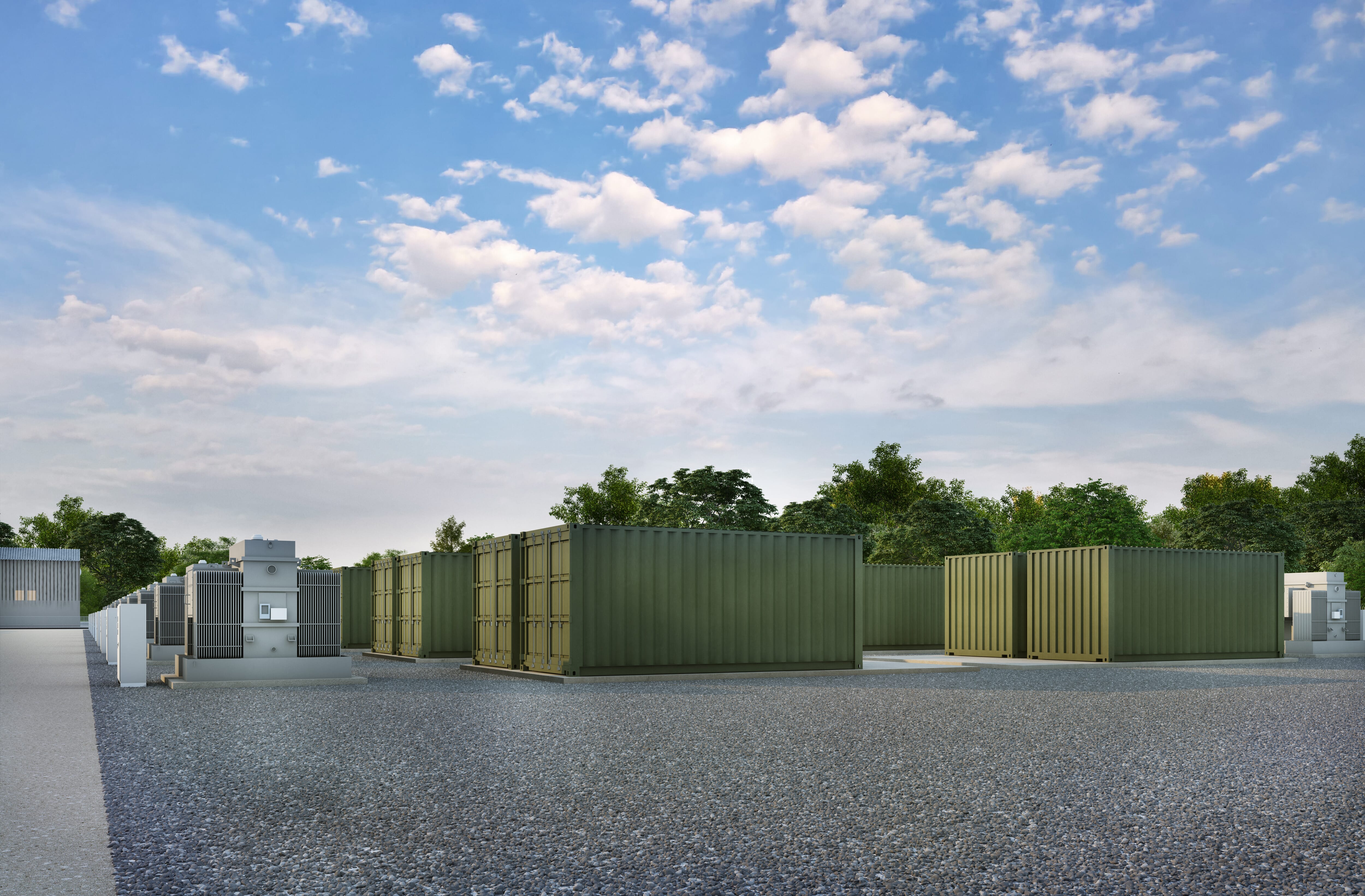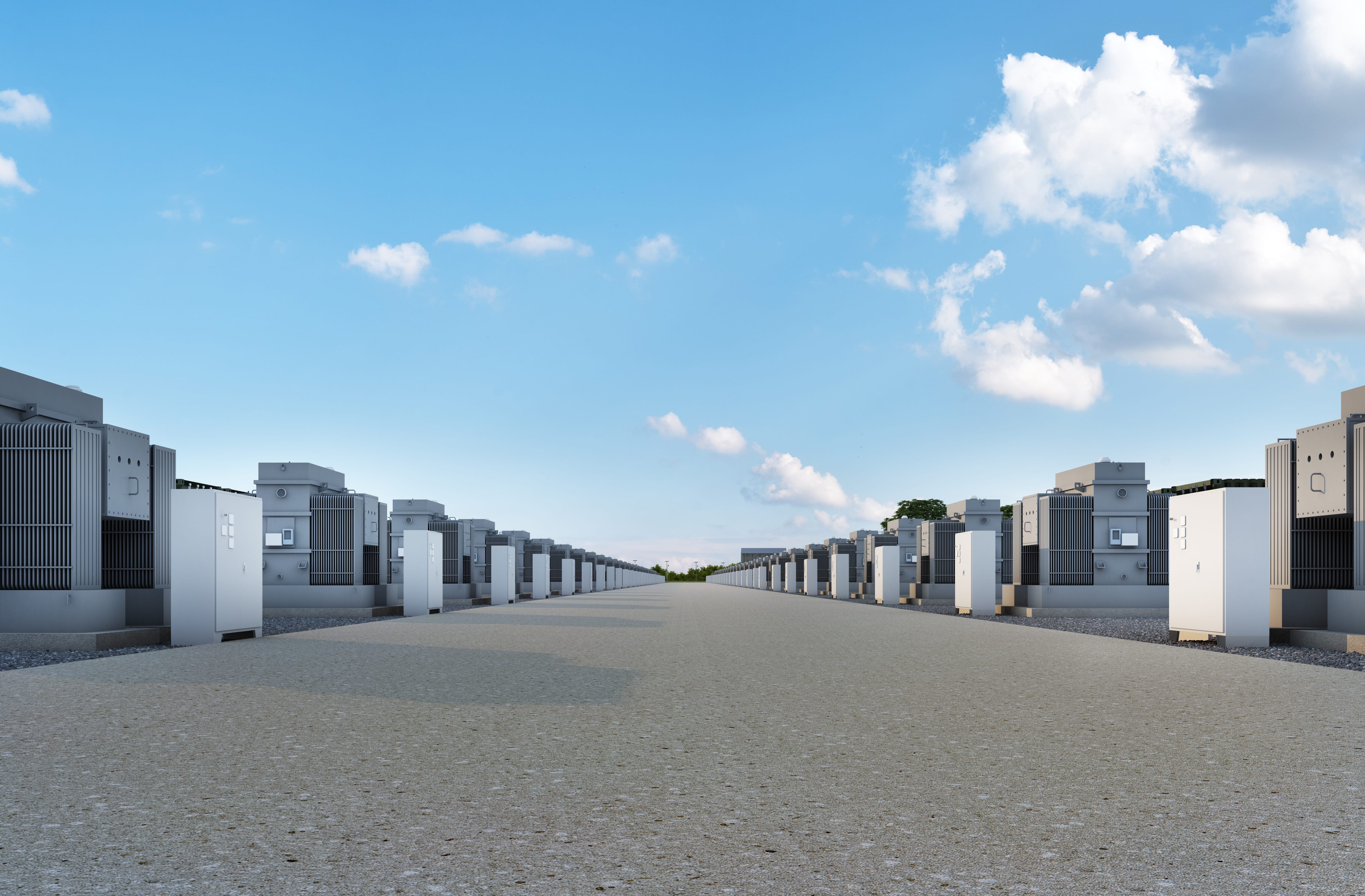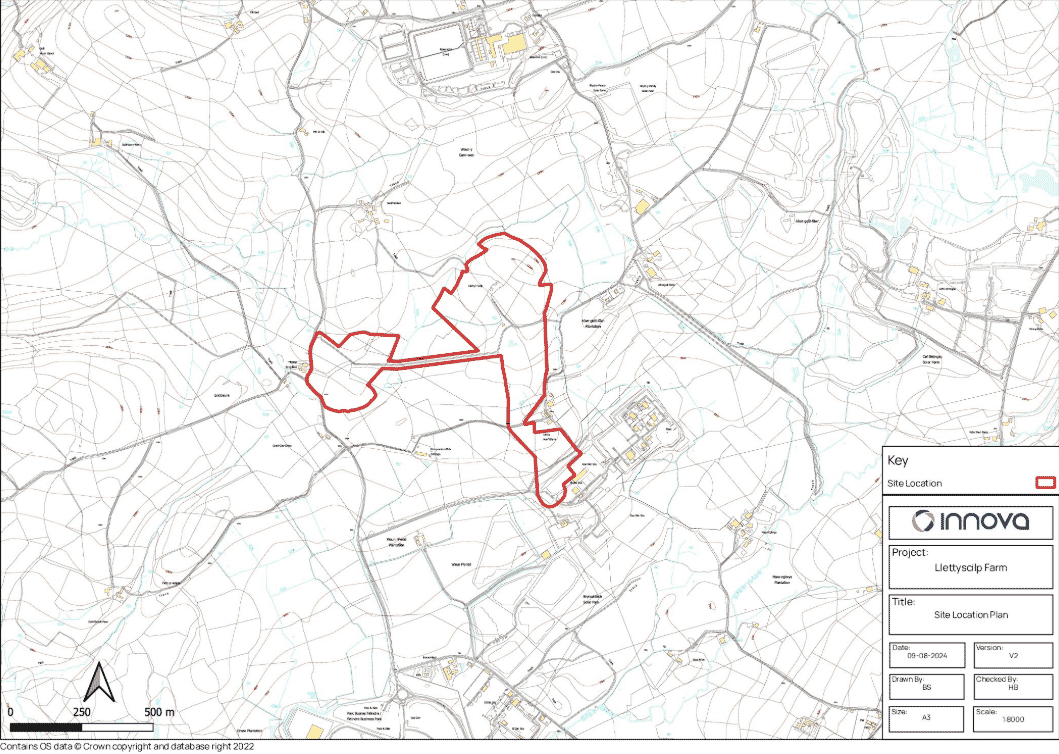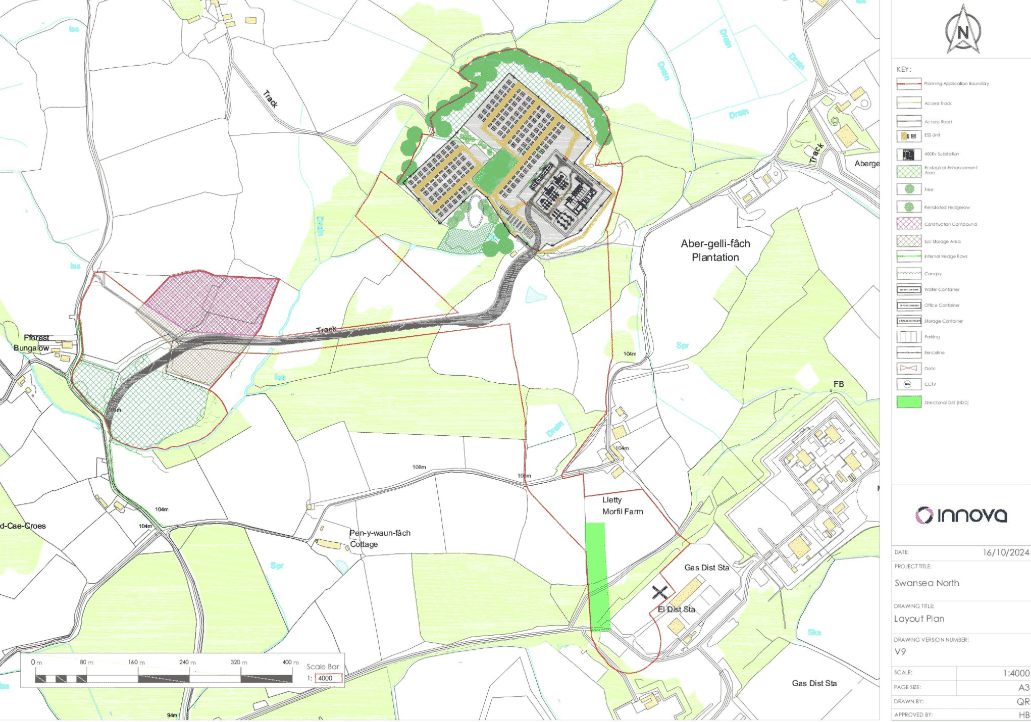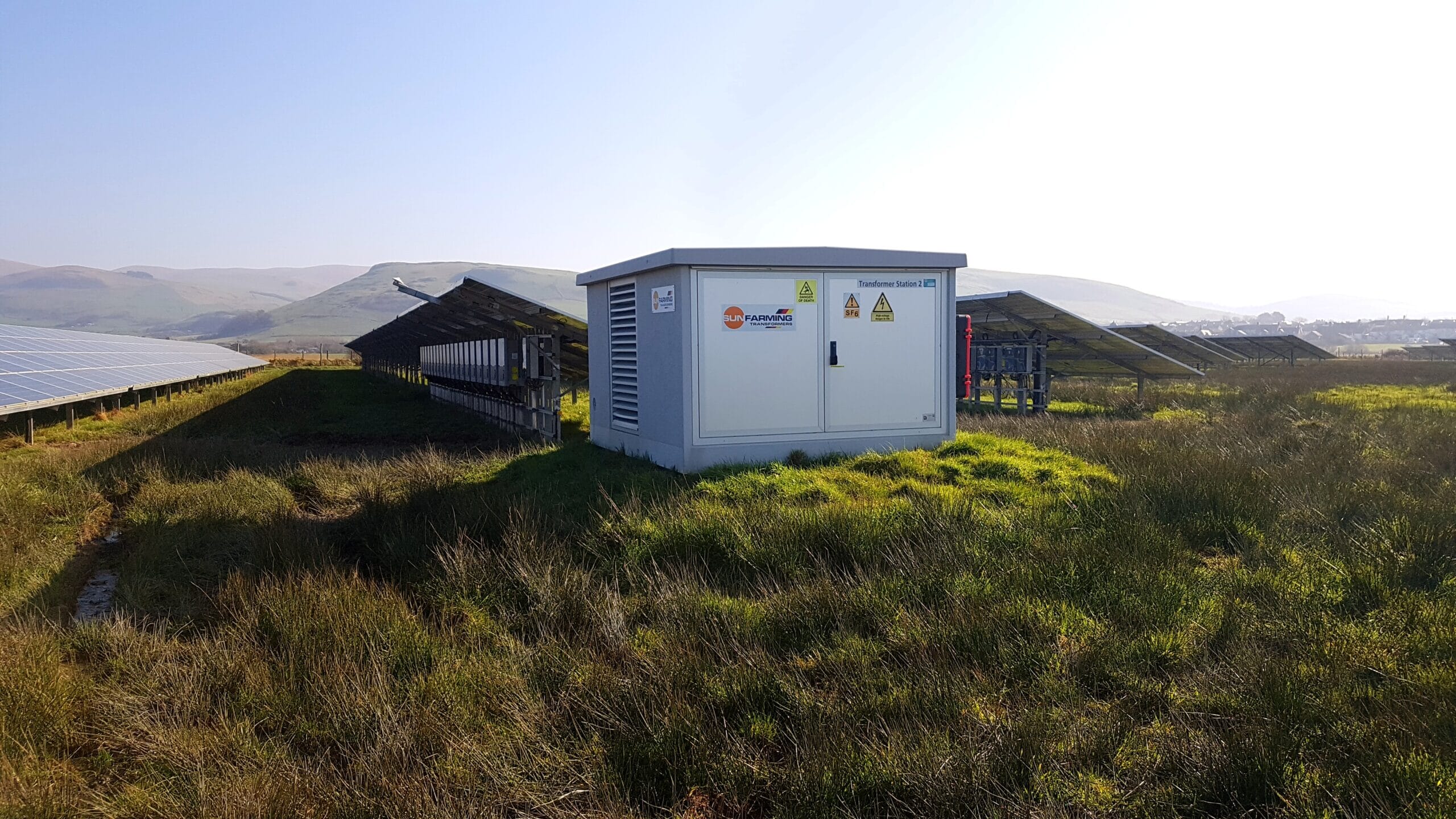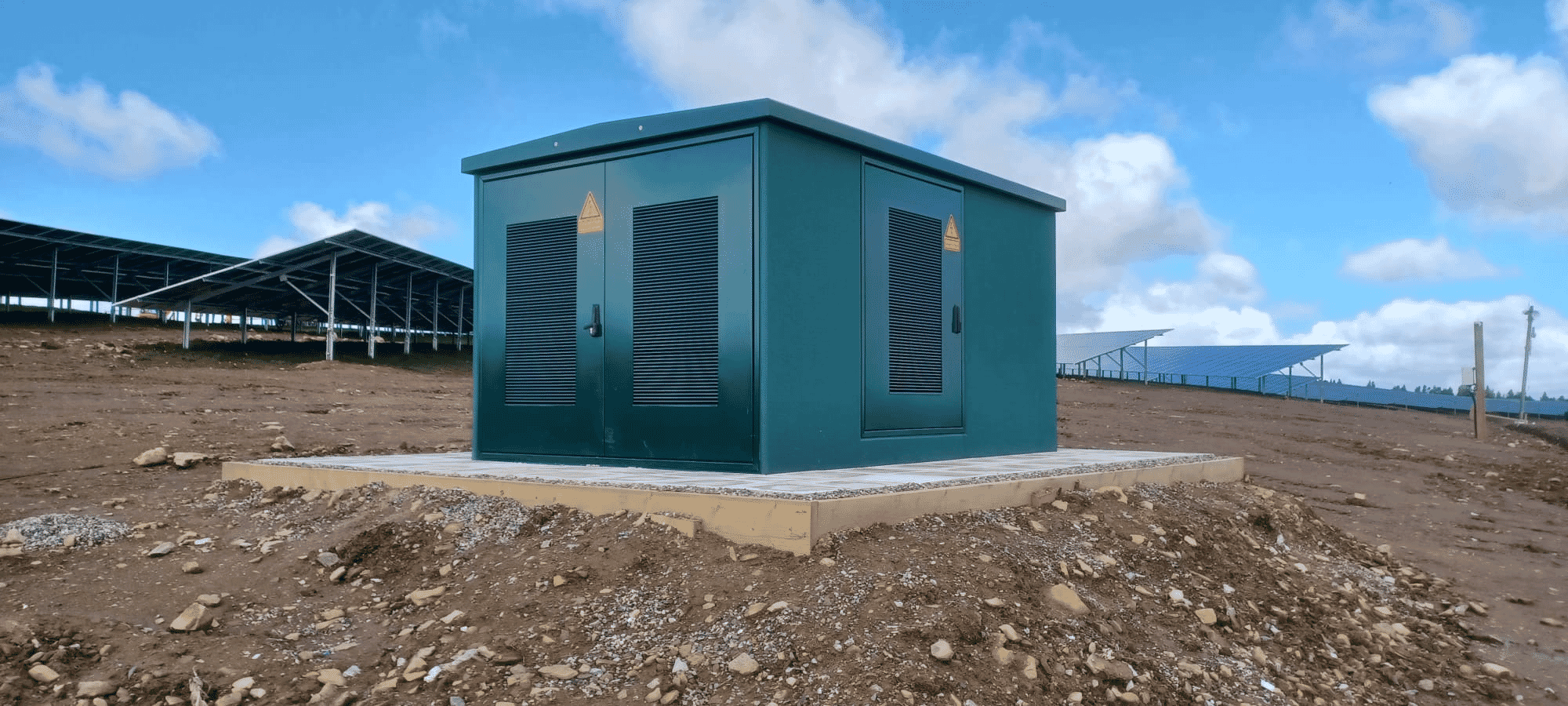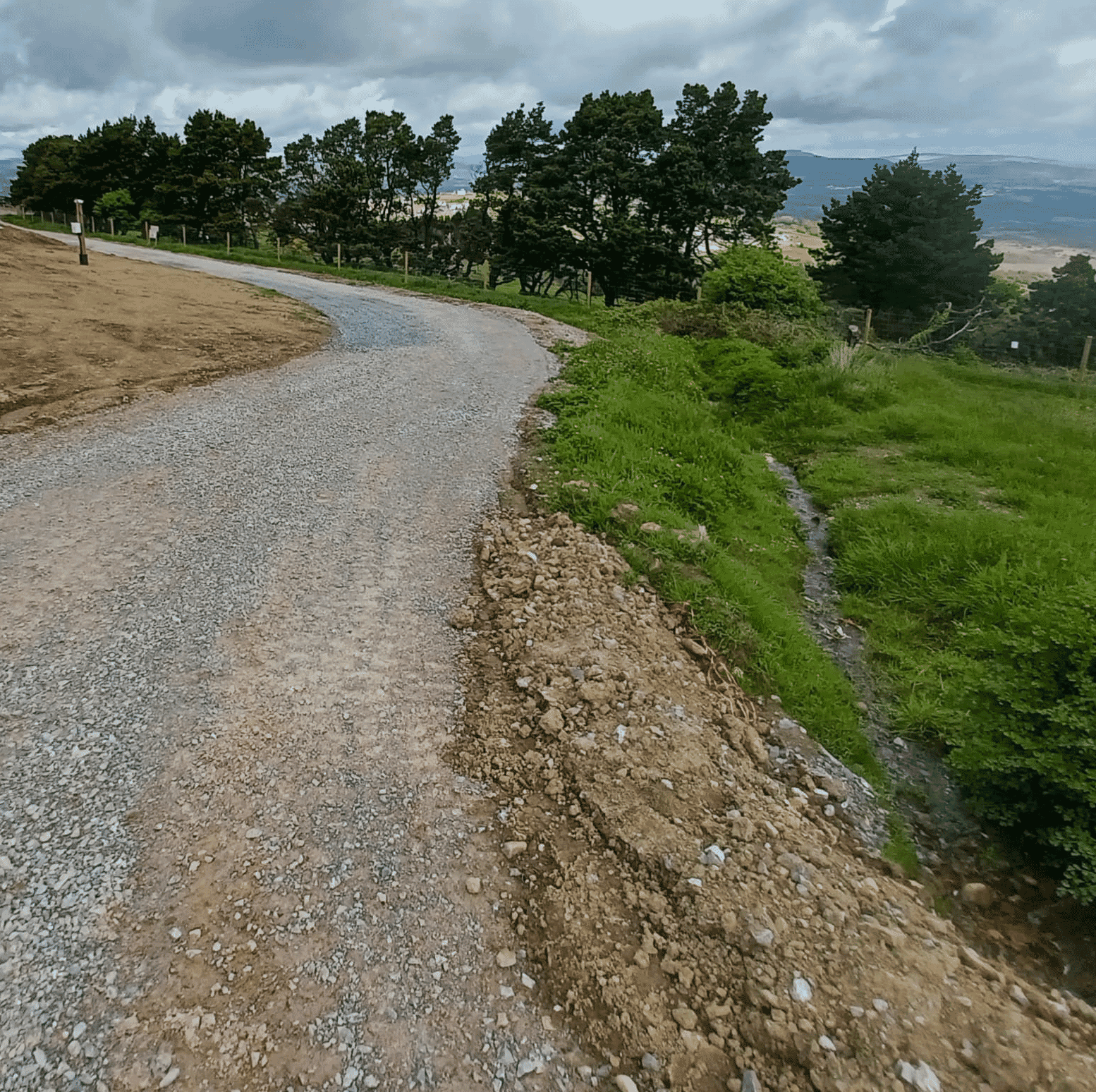Introduction
Innova are working on a proposal for an energy storage system on land to the northwest of Swansea North National Grid substation, to the east of the B4489. The scheme will be wholly contained within grazing fields, which will contain all technical equipment and areas of Biodiversity Net Gain (BNG). This proposal will be connected into the transmission network, and has potential to be used by local homes and businesses.
The scheme has a maximum export capacity of 400 megawatts (MW). The final installed capacity of the site will be confirmed through the remaining surveys such as Noise, Flood Risk Assessment, and Landscape and Visual Assessment.
The site areas have been carefully selected and designed during a detailed assessment process, which has considered grid availability, access, arboriculture, ecology, heritage, and environmental designations.
The UK has committed to becoming Net Zero by 2050, with the aim to decarbonise the electricity grid by 2030. As part of this, the Government has set an ambitious target to deliver 30GW of energy storage by 2030.
In 2019, Swansea City Council declared a climate emergency, with ambitious targets to be a Net Zero council by 2030 and a Net Zero city by 2050. Projects like Llettyscilp Farm are a key part of meeting these targets.
An important part of the development process and design of the proposed development is to engage with the local community. We are therefore providing project details in the form of project information packs to residents of the local area.
You can also request further information by emailing info@innova.co.uk.
